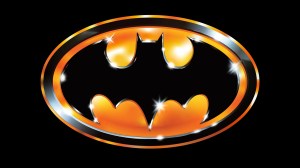For anyone who loves sci-fi movies, there was no decade quite like the 1980s; the releases from that decade stand up with any other in movie history. After World War II, sci-fi movies exploded in popularity, moving beyond the mad scientist trope and delving into nuclear fallout and invasion-themed films fueled by the fear of the Soviet Union during the Cold War. This is always how sci-fi develops: exploring society’s fears and how these issues could create futures or scientific discoveries that are either terrifying or fantastical. It is often the fear of the unknown or the overreach of scientific exploration that leads to the next great sci-fi movie release.
Videos by ComicBook.com
This was never clearer than during the 1980s, when the Cold War was at its most worrisome and yuppie society began exploring scientific fields that many believed would lead to the end of humankind.
The 1980s Sci-Fi Movies Showcased a Fear of the Unknown

One of the last great sci-fi movies of the 1970s paved the way for several 1980s films that followed a similar theme. That was the remake of Invasion of the Body Snatchers in 1978, which followed humans realizing an alien invasion was underway as the aliens captured people and took their place. This was all about Cold War fears, which held the country’s attention for over four decades.
In the 1980s, that theme continued with sci-fi horror movies like John Carpenter’s The Thing and his later cult classic They Live. In the first one, the alien was taking people’s places, but in a much more violent, horrific manner. In the second, the aliens had already taken over and were leading the country via propaganda and subliminal messages. Both movies preyed on the audience’s fear of an unknown presence trying to take over their lives. They Live went one step further and claimed it has already happened thanks to television, news, and media.
The decade also saw a rise in dystopian sci-fi movies, as people sought to tell stories about what would happen if the U.S. government gave way to fascism and a dictatorship. Movies like Escape from New York showed a world where the government basically threw out criminals, leaving them to survive on their own in a prison town in Manhattan. The Mad Max franchise continued, showing what would happen if humans kept depleting Earth’s resources. Videodrome was a body-horror film that explored the fear of technology as television became increasingly prevalent in people’s lives.
Mad Scientist Movies Were Still in Demand

While alien-invasion movies and the sense of other beings trying to take over our lives were popular in the 1980s, there was also a rise in mad-scientist films similar to those from classical sci-fi Hollywood storytelling. This was never better than when David Cronenberg set out to remake a classic horror movie called The Fly. What resulted was a movie superior to the original in every way, as Jeff Goldblum played Seth Brundle, a scientist who created a teleporter. However, it all went wrong when he teleported with a fly, the journey causing the two to fuse. When Brundle began to turn into a giant fly creature, it was disgusting body horror with a message about not overstepping the bounds of science.
At the same time, two of the 1980s’ biggest blockbuster sci-fi movies also had a lesson about the dangers of science. The first was Aliens, the sequel to a 1970s horror movie, Alien, which showed what would happen when a company puts its race for scientific discovery above the value of human lives. The second was a James Cameron movie called Terminator, which showed what happens when humans rely so much on computers that they let them take over. With the rise of yuppie culture and the ’80s race to the top, it was easy to see how these sci-fi movies about the dangers of big business and tech would also rise.
Blade Runner remains widely considered one of the best sci-fi movies of all time. Released in 1982, it tells the story of a world that creates “Replicants,” which are basically robots who believe they are human, made to do menial work, but denied human rights. It is a strong sci-fi story about real-world issues concerning who is considered a human with rights and who is considered someone without human rights, an issue that was a strong concern in the 80s and remains one to this very day.
Even the action-based sci-fi movies followed this same format. RoboCop was a movie about creating a cyborg police officer in a futuristic society, but having a big business corporation control it, which leads to death and mass destruction. The Running Man predicted reality TV and asked what would happen if a business worked with the government to create a game show where people would compete with their lives at stake.
The 1980s Also Featured Sci-Fi Movies About Hope in a Time of Fear

Not all sci-fi movies can be about the fear of the unknown. At the same time that people are scared by real-world issues changing society at a rapid pace, many people need sci-fi movies that offer some hope. That was also on display in the ’80s. Blade Runner was a box-office flop, only becoming a masterpiece after some time had passed. John Carpenter’s The Thing was also a flop until it hit home video and became a cult favorite. However, E.T. the Extra-Terrestrial was a massive box office hit and remains a masterpiece of sci-fi cinema.
Unlike The Thing, which was about a monstrous alien killing people, E.T. was about a lovable alien that some kids had to protect from evil government forces. Moviegoers wanted to see something comforting, and a friendly alien trumped a murderous monster any day in that decade. This also played out in movies like the teen comedy Weird Science and the fun robot sci-fi movie Short Circuit. Flight of the Navigator was a movie about a young boy abducted by aliens who returns home years later, having not aged. All of these are family-friendly sci-fi entertainment.
The same thing could be said for the late ’80s sci-fi masterpiece Back to the Future. This movie took the best of both worlds. It was a cautionary tale about playing with science and the possibility of destroying society by making the wrong decision, but also a hopeful story with a lesson learned. Doc Brown wasn’t a “mad scientist” in the bad form, but he was still the archetype done in a way that was more lovable and redeemable. This was the happy sci-fi that society seemed to want in a world that feared nuclear destruction.
In the end, the sci-fi movies of the 1980s ran the gamut of everything the decade was about. The era of excess featured sci-fi horror stories about the dangers of big business and technology. The decade that saw Cold War fears heightened to unbearable levels had sci-fi horror movies about aliens invading the Earth and taking over humanity’s lives. Finally, the decade, with all these fears and uncertainties about the future, also had hopeful sci-fi movies that made it seem like everything might work out in the end.
What do you think? Leave a comment below and join the conversation now in the ComicBook Forum!









